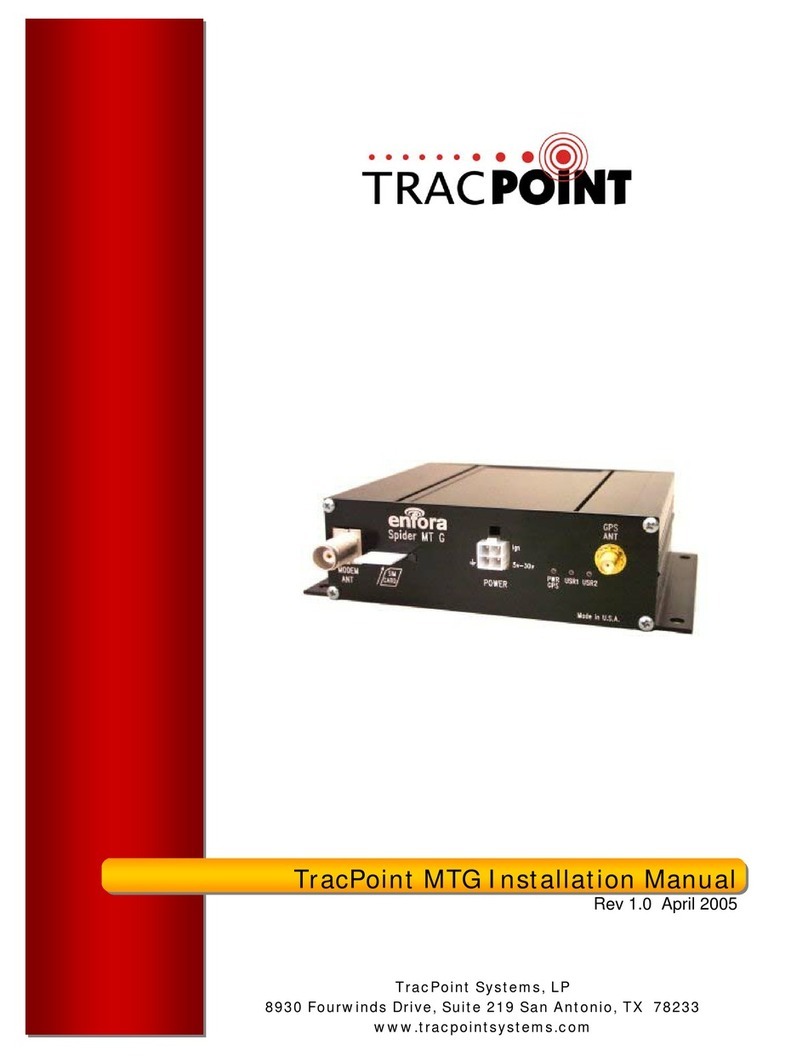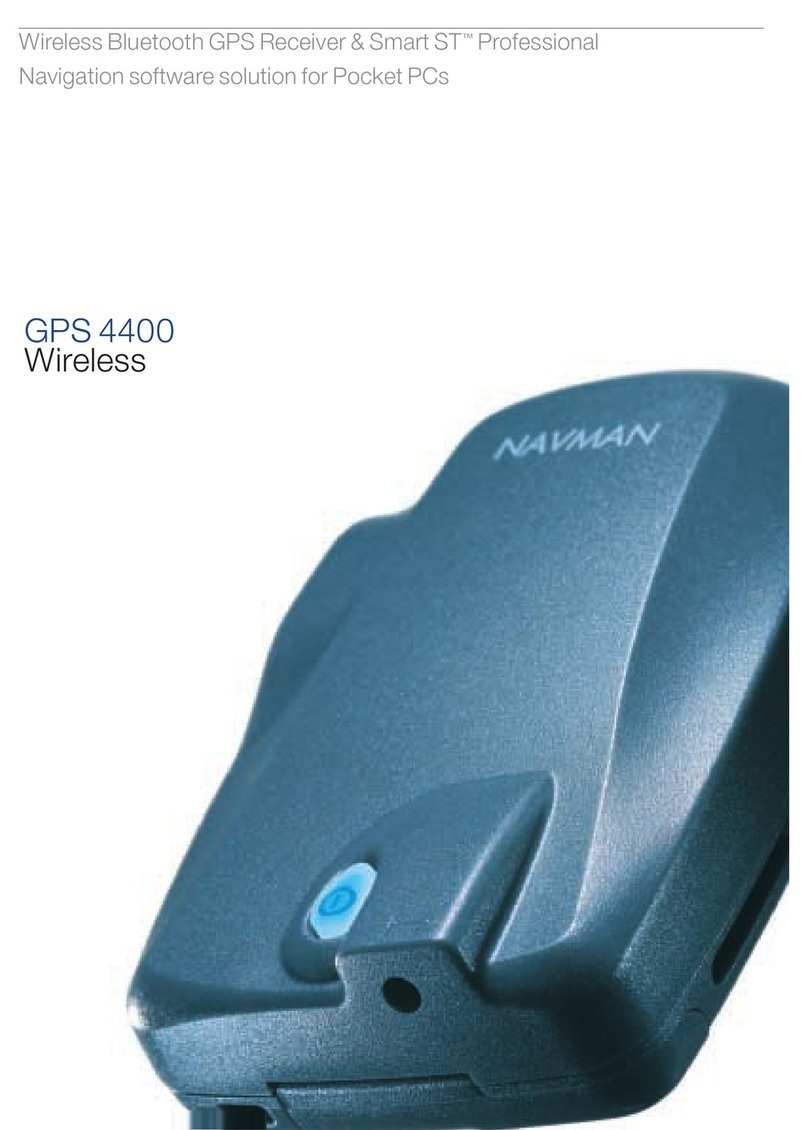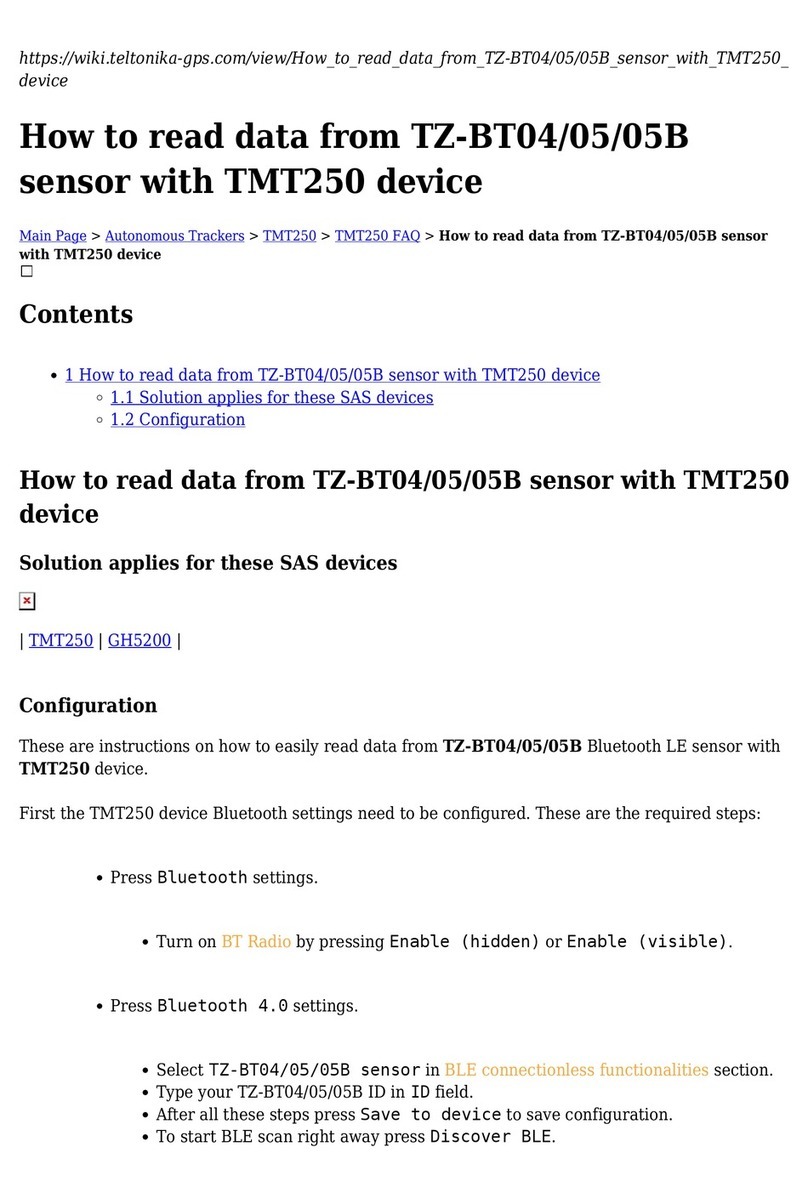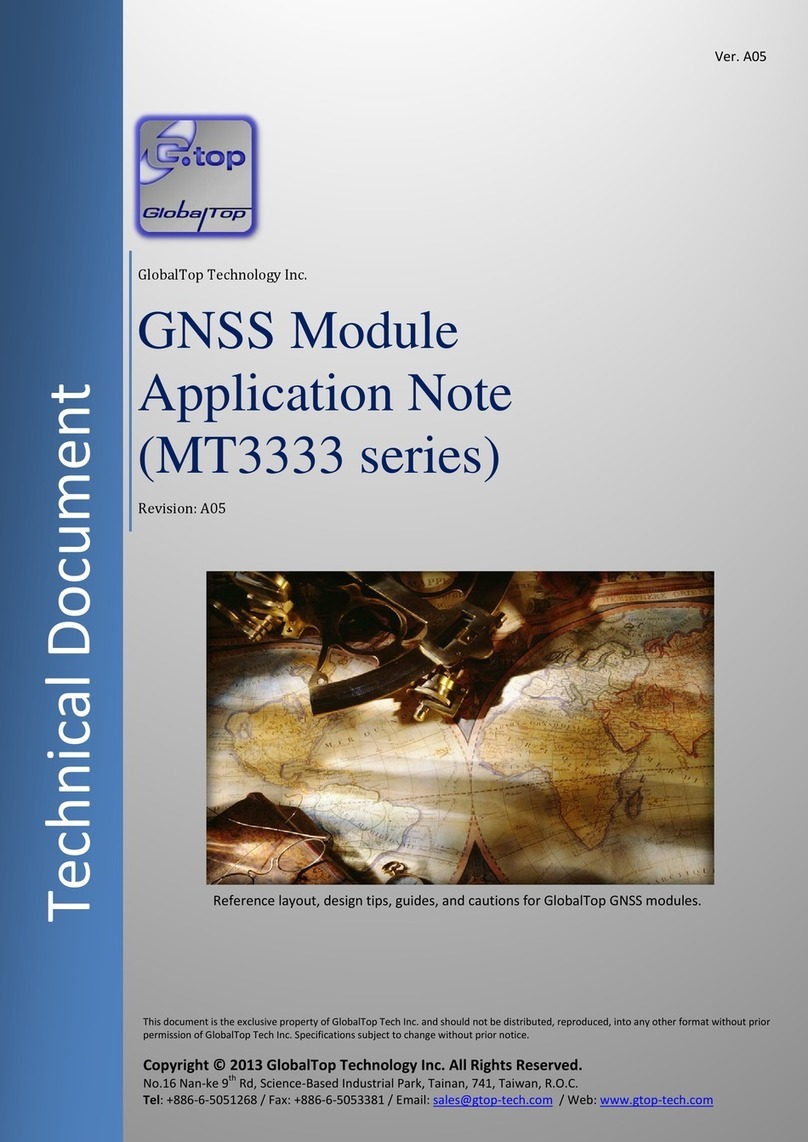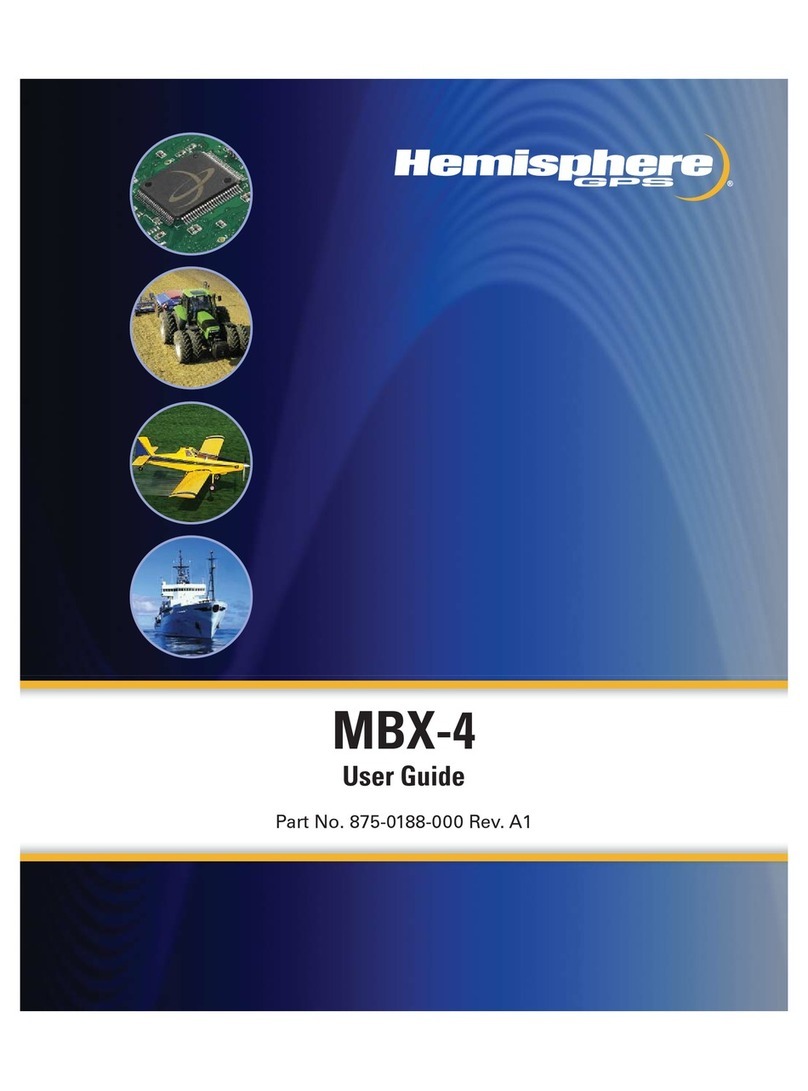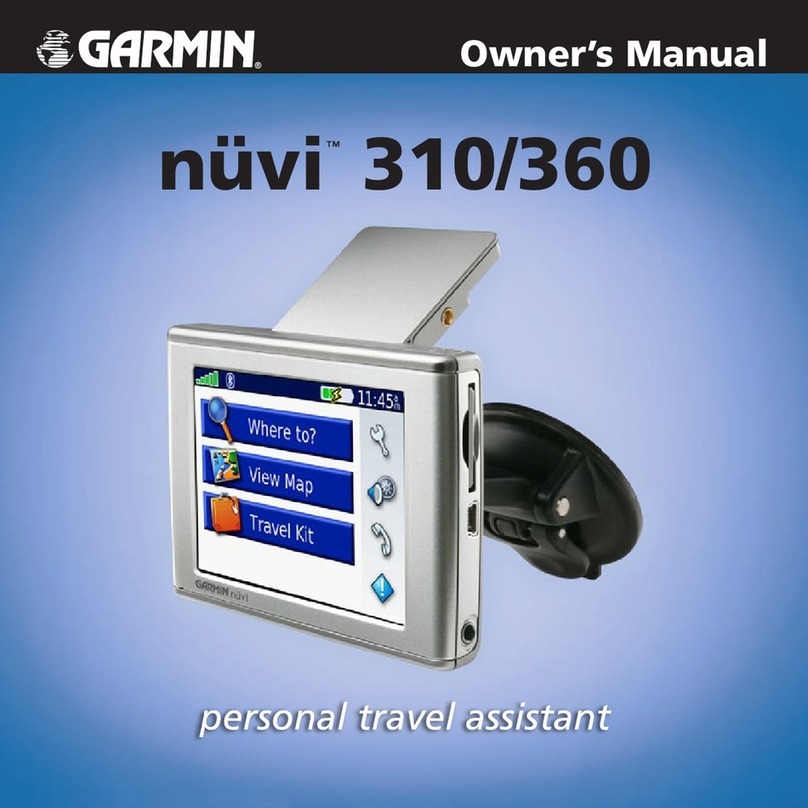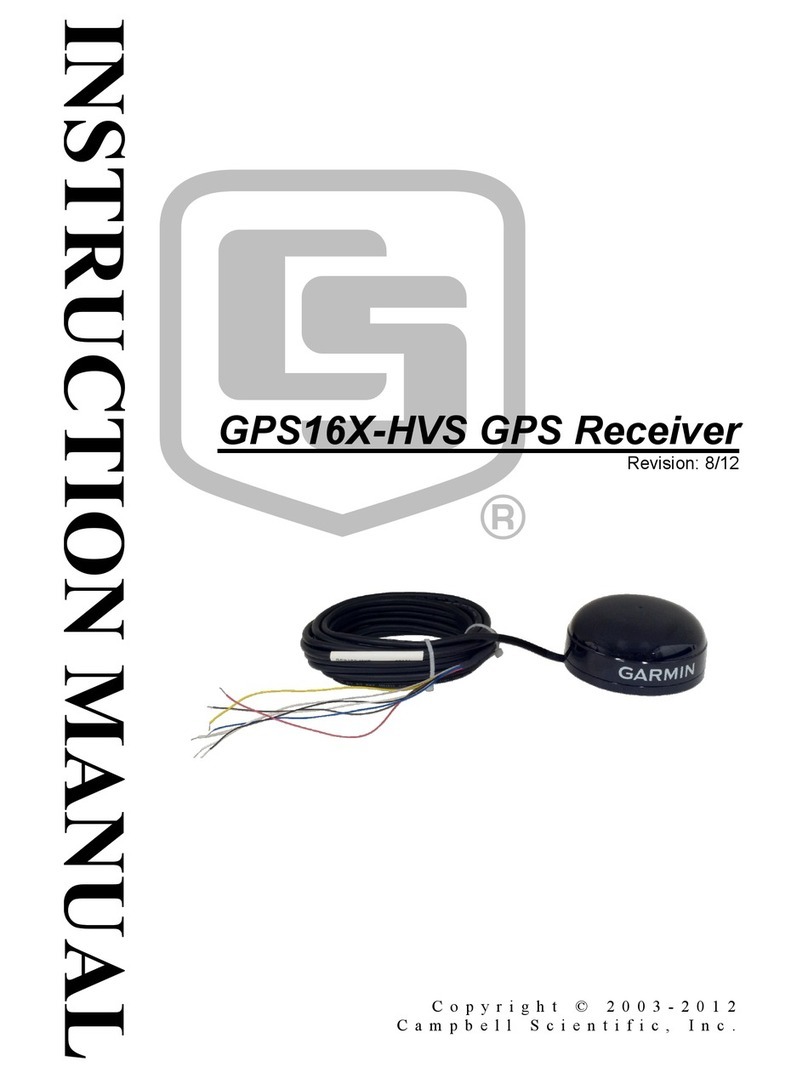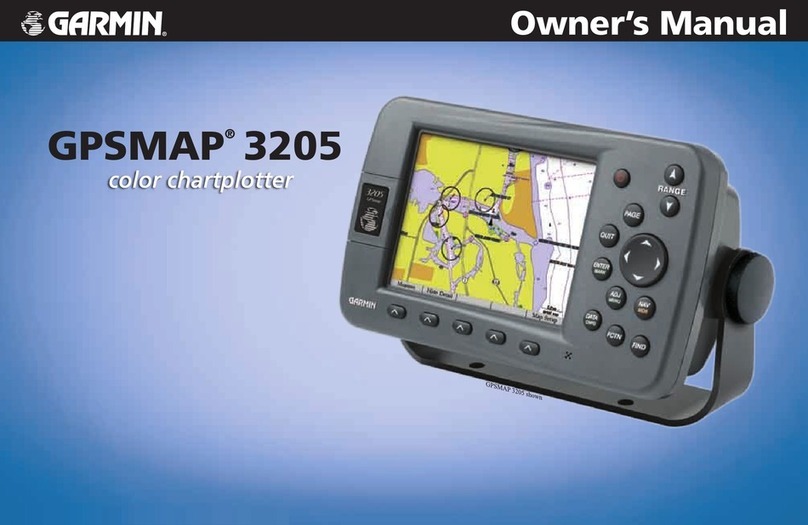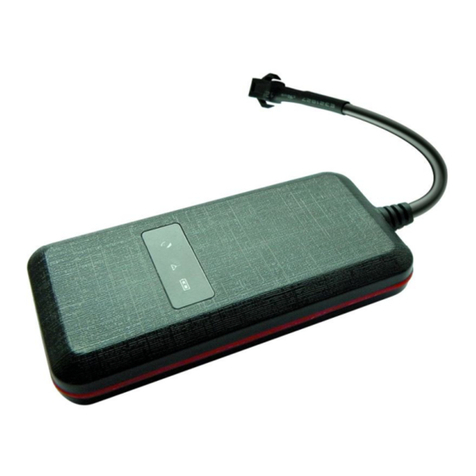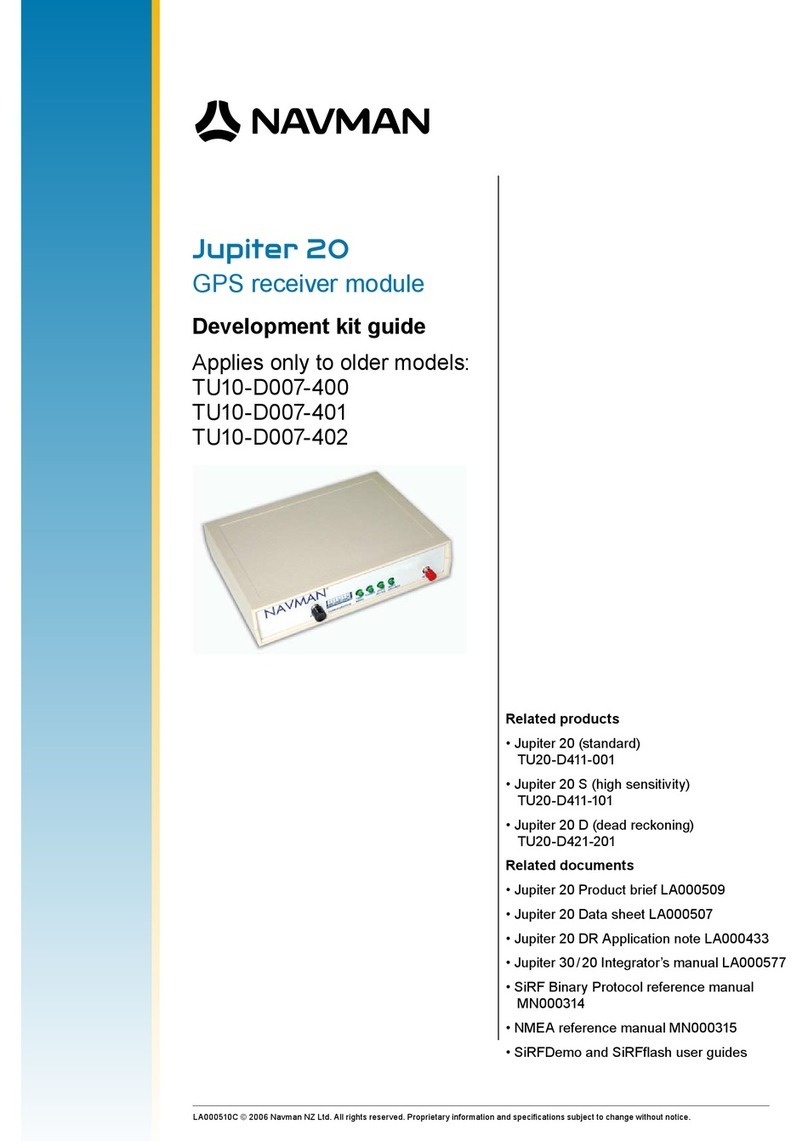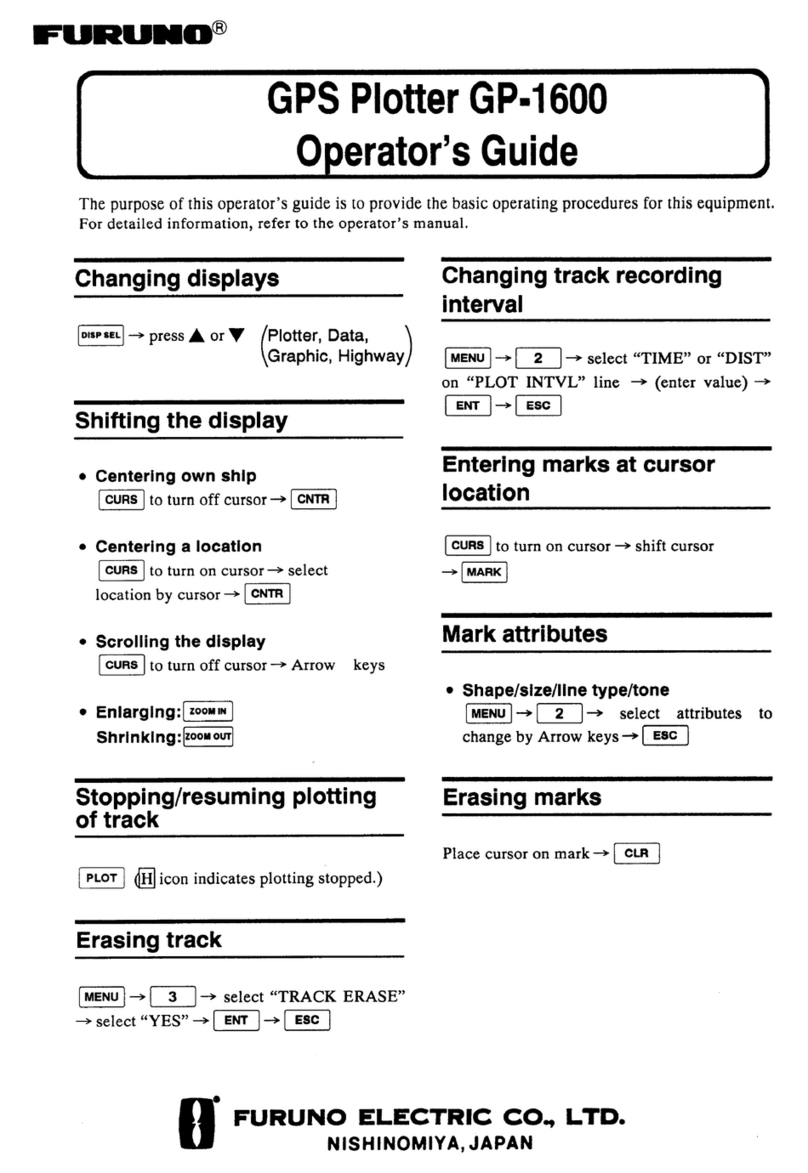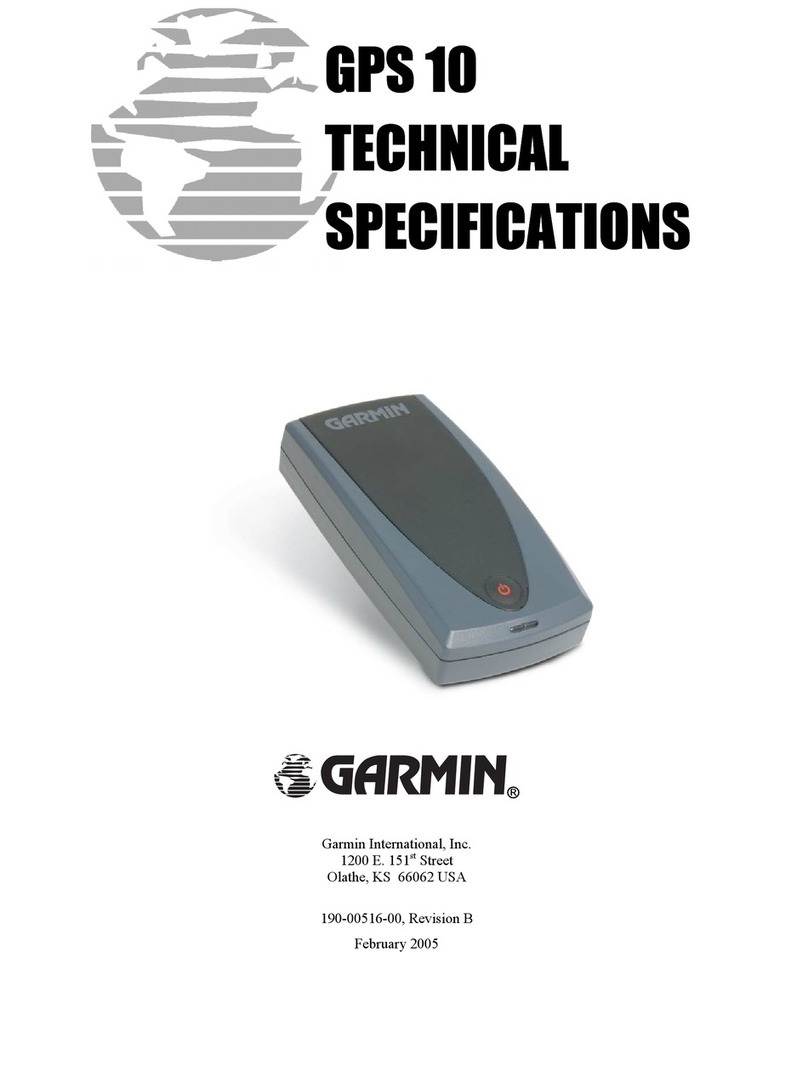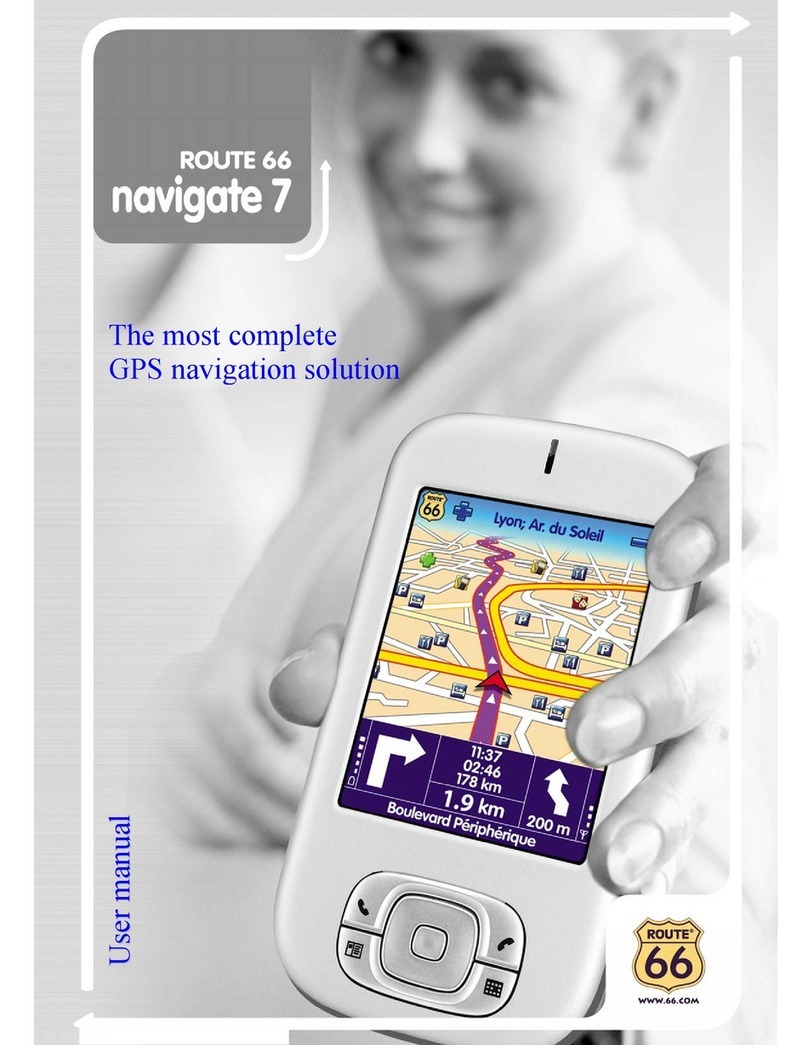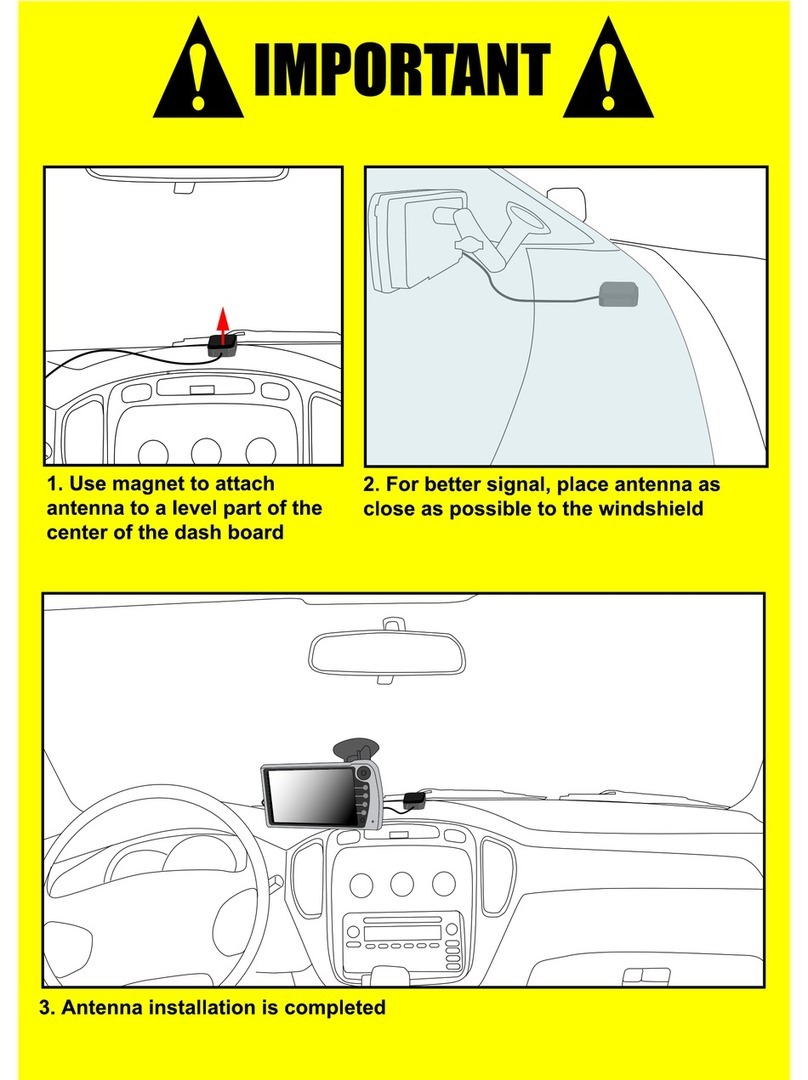Made Gas Tracker 2 User manual

M A D E
S.A. au capital de 270 130 €
167, Impasse de la garrigue
F 83210 LA FARLEDE
Tél. : +33 (0) 494 083 198 - Fax : +33 (0) 494 082 879
E-mail : contact@made-sa.com- Web : www.made-sa.com
FQ_47_V_1.00 du 22.12.2015
Gas Tracker 2
User Guide

gu_gas_tracker2_v_2_15_en
2 / 35
RÉPERT OIR E DES MODIF IC ATIONS
Rév.
Objet des modifications
Date et Auteur
1.00
1.10
2.00
2.01
2.10 FR
2.10 EN
2.11 EN
2.12 EN
2.13 EN
2.13 EN
2.15 EN
CRÉATION
Corrections mineures
Refonte manuel et rajout cas pratiques
Ajout notes de sécurité électrique
Corrections mineures / terminologie
English translation
Added tech. Details §8
Added the use of tablet
Minor corrections
Added location and log information
Added location and log information
2011 Ph. Coste
2015 Ph. Picon
12/2016 Ph.Picon
01/2016 Ph Coste
01/2016 Ph. Picon
01/2016 Ph. Picon
09/2017 Ph.Picon
03/2018 L. Zomero
12/2018 Ph.Picon
12/2018 L. Zomero
02/2019 P.Picon

gu_gas_tracker2_v_2_15_en
3 / 35
S OM M AI R E
1. PRESENTATION 5
2. SAFETY INFORMATION 5
2.1. Safety instructions 5
2.2. Use od safety instructions 5
2.3. Warning labels 5
3. GENERAL PRESENTATION 6
3.1. Gas Tracker set 6
3.1.1. Composition of the transmitter case 7
3.1.2. Composition of the receiver case 7
4. GAS TRACKER TRANSMITTER 8
4.1. Description of the front panel of the transmitter 8
4.2. Operation of the Gas Tracker transmitter 9
4.2.1. Power supply 9
4.2.2. Connection to the transmitter network 9
4.2.3. Procedure for putting the transmitter into service : 10
4.2.4. Procedure for removing the transmitter : 11
5. GAS TRACKER RECEIVER 12
5.1. Using the receiver 14
5.1.1. Ground sensor 15
5.1.2. Running the GT2 application on the PDA : 15
5.1.3. Pairing the PDA with the sensor via bluetooth 16
5.1.4. Initial settings 17
5.1.5. Measurements 17
5.1.6. Bargraph 19
5.1.7. Histogram 19
5.1.8. Icons 20
5.1.9. Location 21
5.1.10. Log 21
5.1.11. Log files 21
5.1.12. Location files (Android tablet only) 22
5.1.13. Tips for good use 23
6. LIMITS AND CONDITIONS OF USE 24
7. PRACTISING ON THE FIELD 25
7.1. Using the acquisition sensor on different types of soil 25
7.2. Pre-locating 26

gu_gas_tracker2_v_2_15_en
5 / 35
1. PRESENTATION
This document constitutes the user guide for the product Gas Tracker 2. It describes the
commissioning of the device and its various modes of operation.
2. SAFETY INFORMATION
2.1. Safety instructions
Please read this manual carefully before unpacking, configuring or using this equipment. Pay
attention to all statements of danger and warnings. Failure to follow these instructions could
result in serious injury to the operator or equipment damage. To ensure proper protection of this
equipment, do not use or install it other than as specified in this manual. Only accessories
conforming to the characteristics of the original ones must be used. Disconnection in case of
problems during recharging is done by the mains plug. The equipment must always be used in
accordance with the instructions given in this manual so that the protection it provides is not
compromised. Any maintenance or repair work must be carried out only by the manufacturer or
authorized personnel.
2.2. Use od safety instructions
DANGER : Indicates an eminently or potentially hazardous situation which, if not avoided, could
result in death or serious injury.
CAUTION : Indicates a potentially hazardous situation which could result in superficial or
moderate injury.
Note : Information that deserves to be highlighted
2.3. Warning labels
Read all labels and labels affixed to the instrument. Personal injury or damage to the instrument
may occur if instructions are not observed.
Symbol referring to the operating instructions and / or safety instructions.
Class II - double insulation and reinforced insulation
Overvoltage or installation category
Cat. III

gu_gas_tracker2_v_2_15_en
6 / 35
3. GENERAL PRESENTATION
GAS TRACKER 2 is an equipment used for tracing, above ground, buried polyethylene gas
pipes.
The GAS TRACKER operates on gas pipes operating at low pressure (21 mbar) or medium
pressure (4 bars). Use with "air" pipe is possible.
The principle used is the transmission of an acoustic signal through the gas under pressure in
the network causing the pipe to vibrate. The localization, operated by an acquisition and
calculation ground sensor, makes it possible to locate the vertical of the tube, even in perturbed
zones with high sound levels.
Two connection modes are possible:
• On a customer connection after disconnecting the meter; It is the method that gives the best
results in terms of detection range. This is the recommended method for detecting a main pipe.
• Connection to the pressure valve (French network only), without disconnecting the customer; it
is more practical but with a lesser detection range (location of a service pipe for example).
3.1. Gas Tracker set
GAS TRACKER 2 consists of :
A carrying case containing the transmitter, the injection box, and associated connectors,
A carrying case containing the PDA (or tablet) receiver, the acquisition ground sensor,
the charger, and connection accessories.

gu_gas_tracker2_v_2_15_en
7 / 35
3.1.1. Composition of the transmitter case
Carrying case with integrated transmitter.
Retaining strap
Connecting cable to transmitter (3m).
Flexible connection pipe (according to country option)
Purge tube
Supporting leg.
Cigarette lighter adapter
External power cable.
Safety Shunt
3.1.2. Composition of the receiver case
Carrying case
PDA receiver with carrying bag or tablet
PDA (or tablet) charger
Resonator tank
Sphero-conical fittings (optional)
U-shaped copper fitting (optional)
Acquisition ground sensor.
Telescopic rod
Set of long legs for the ground sensor
Charger for the ground sensor
Flexible connection for pressure tapping
User guide and plastic covered instruction sheet

gu_gas_tracker2_v_2_15_en
8 / 35
4. GAS TRACKER TRANSMITTER
The GAS TRACKER transmitter injects the acoustic signal into the gas network.
4.1. Description of the front panel of the transmitter
Transmitting
indicator
Default
indicator
External battery
power indicator
Battery
charge
indicator
Plug for connecting the
resonator tank
Mains power switch
Mains plug for
internal batteries
110-240V 50/60Hz
External 12V 3A power
supply plug

gu_gas_tracker2_v_2_15_en
9 / 35
4.2. Operation of the Gas Tracker transmitter
4.2.1. Power supply
The GAS TRACKER Transmitter can be operated on batteries or mains. The mains connection
recharges the internal batteries.
A plug for connecting to a vehicle battery (alligator clips) or a cigarette lighter socket is provided.
If this supply is used, the internal battery pack is deactivated.
Maximum consumption of the transmitter unit: 3A under 12V or 36W.
4.2.2. Connection to the transmitter network
A "U" connection Ø 20 makes it possible to connect directly to the customer shut-off
valve upstream of the meter or pressure regulator on 4-bar networks. Other adapters are
provided for different diameters.
A flexible connection for connection to the pressure connection (depending on country)

gu_gas_tracker2_v_2_15_en
10 / 35
The resonator tank leans on the customer meter box. A supporting leg is integrated into the
handle of the tank. The leg is adjustable by a knob to accommodate the height of the box.
A retaining strap is provided for high installation.
4.2.3. Procedure for putting the transmitter into service :
In addition to the following instructions, please follow the procedures applicable at your local
gas network operator. transmitter allows the acoustic signal to be
1. Remove the meter
2. Connect the resonator tank to the inlet valve, the purge valve must be open. Use the supporting
leg and the copper fittings if required.
3. OPEN the GAS by SLOWLY OPENING the CUSTOMER TAP so as not to damage the inner
membrane.
4. Leave the drain valve open for 5 seconds and close.
5. Check the connection for leaks
6. Connect the power supply
7. Press the ON button (green)
The signal then propagates into the gas and vibrates the pipe.
Check the battery level, if it is orange or red then ,
oUse the external connection cord (connection to vehicle battery or cigarette lighter
adapter)

gu_gas_tracker2_v_2_15_en
11 / 35
oConnect to the mains using the cord provided to the transmitter (the transmitter
will be recharged during use).
4.2.4. Procedure for removing the transmitter :
1. Close the inlet valve
2. Switch off the transmitter and disconnect the electrical cable from the tank
3. Vent the tank by opening the drain valve for a few seconds (approx. 5 seconds) and then close it.
4. Replace the shunt connected to the gas tap and customer installation.
5. Remove the tank and take care not to damage the inlet valve
6. Reassemble the customer installation.

gu_gas_tracker2_v_2_15_en
12 / 35
5. GAS TRACKER RECEIVER
The transport case includes the GAS TRACKER receiver assembly.
The Gas Tracker receiver consists of 2 main components :
The Ground acquisition sensor
The PDA for displaying results
PDA or
tablet
Ground
sensor

gu_gas_tracker2_v_2_15_en
13 / 35
A "bluetooth" wireless link ensures communication between the acquisition sensor and the PDA.
The PDA has a touchscreen, all user commands are passed by pressing the screen (with the
finger or stylus provided) on the corresponding ideograms and commands.
Battery:
• The battery pack of the acquisition sensor is NiMH type, the charge level is displayed on the
receiver GT2 application. To recharge it, use the charger provided for this purpose.
• The PDA has its own batteries, rechargeable with a charger supplied by the manufacturer and
delivered with the GAS TRACKER 2.
• An inverter / DC / AC converter allows the vehicle's cigarette lighter socket to be used to
charge the BASE and / or PDA. (Optional)
Visualization on PDA Visualization on tablet
Left to right : converter, PDA charger and Ground sensor charger
Ground sensor
charge level
Receiver charge
level

gu_gas_tracker2_v_2_15_en
14 / 35
5.1. Using the receiver
PDA
Tablet
Ground sensor

gu_gas_tracker2_v_2_15_en
15 / 35
5.1.1. Ground sensor
Move the sensor using the removable stick. You can adjust the length
of the stick if needed.
5.1.2. Running the GT2 application on the PDA :
Operate as follows:
The transmitter must be connected to the gas network according to the instructions for
use (see § 4.2).
The ground sensor must be switched on with the push-button on the top (the red LED
flashes rapidly for 5s, then slowly, indicating that the initialization phase is complete).
The application must be started on the receiver by pressing GasTracker 2 (see screen
below) or by pressing the standby button if it was already active with the PDA in idle
mode.
If the application is started before the sensor, the connection will fail; In this case, switch
on the sensor, wait until the end of the initialization and press “connection”.
Visualization on PDA Visualization on tablet

gu_gas_tracker2_v_2_15_en
16 / 35
5.1.3. Pairing the PDA with the sensor via bluetooth
When starting the application, if the default base is on (red LED flashing slowly) the connection
is automatic. If for some reason this is not the case:
Switch on the base (press the button and wait for the red LED to flash slowly)
On the PDA:
Enter the login window via the menu at the bottom left.
Use the button CONNECTION.
On the tablet :

gu_gas_tracker2_v_2_15_en
17 / 35
All detected databases appear in the list, they are identified by their hardware address in
the following format XX: XX: XX: XX: XX: XX).
Then press SET AS DEFAULT button if you wait to set the selected base as default.
Then press CONNECTION
5.1.4. Initial settings
First choose the Noise level mode (estimated ambiant noise level).
MODES
There are 4 MODES corresponding to 4 levels of noise
Low
Medium
High (default)
Extreme
The Mode selection directly impacts the acquisition time; the higher the noise level, the greater
the acquisition time in order to avoid induced acoustic perturbations. This choice is not definitive
because at any time, this parameter can be changed simply by activating the MODE selection
drop-down list at the top left of the measurement window.
5.1.5. Measurements
Once the MODE is selected, the measurement window appears fully; you can start the
measurements.

gu_gas_tracker2_v_2_15_en
18 / 35
On the PDA:
Areas of the measurement window, from top to bottom:
At the top of the status bar, left to right:
oMode selection (ambiant noise)
oBattery level of the PDA
oBattery level of the ground sensor
oStatus of bluetooth connection
Bargraph and measurement histogram
Command area (Measurement, Reset, Gain)
Menu
On the tablet :

gu_gas_tracker2_v_2_15_en
19 / 35
The placement of information is somewhat different than on the PDA but the functionalities are
the same.
An additional function is available on the tablet: the sound activation is used to play pulse sound
signal with a repetition period proportional to the intensity of the ground signal.
5.1.6. Bargraph
The bargraph makes it possible to quickly evaluate the signal level detected by the
sensor before digital processing. It displays this information from left to right by first filling
in green, then yellow and finally in red the display area. To make an acquisition in the
best conditions, the display must be located mostly in the green zone (if not, decrease
the gain).
5.1.7. Histogram
The histogram collects all the measurements and displays them from left to right. The
height of a rectangle gives the amplitude (level), the color (green, yellow, red) is related
to the quality of the measurement, and the hatching refers to the saturation of the sensor.

gu_gas_tracker2_v_2_15_en
20 / 35
Histogram in detail
Means an excellent quality measurement (very good signal to noise ratio), the height
represents the signal level.
Means an acceptable quality measurement (good signal to noise ratio), the height
represents the signal level.
Means a measure of insufficient quality (low signal-to-noise ratio), the height is only an
approximation of the signal level.
Means that the measurement has been made with a gain too high and that the
sensor saturates: the height is not really representative of the level of the signal being searched.
The color always indicates the quality of the measurement (the sensor may be saturated but
produce measurements with a good signal-to-noise ratio).
To increase the quality of the measurement (change from red to yellow or yellow to
green), the MODE must be "increased". (i.e. switch to a stronger noise selection)
Conversely, if all the measurements are green, it is certainly possible to
"decrease" the MODE and thus shorten the acquisition time.
To eliminate saturation, reduce the GAIN.
5.1.8. Icons
The button triggers a measurement; once done, the result is displayed in the
histogram.
The button removes all measurements from the display.
The button increases the gain (with re-scaling of previous measurements) of
the ground sensor.
The button decreases the gain (with re-scaling of previous measurements) of
the ground sensor.
Table of contents
Other Made GPS manuals


